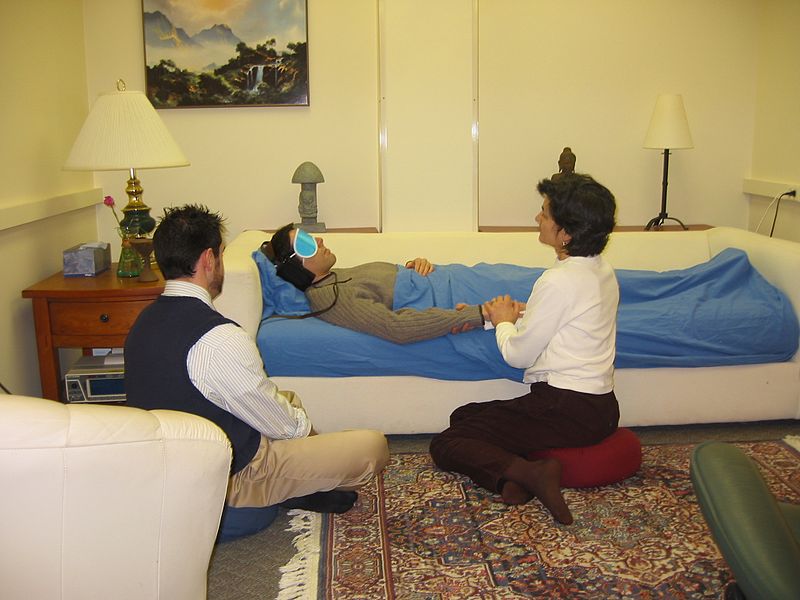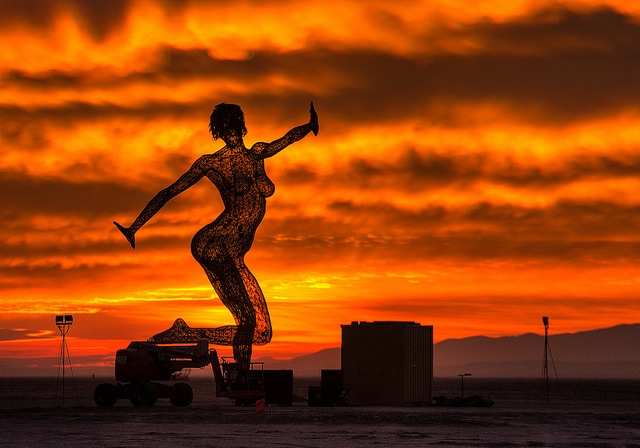|
Here's the continuation of my psychedelics discussion. In the first part, we reviewed the resurgence of psychedelic research and how to support those having challenging experiences. As mentioned previously, you may be interested in not just preventing harm, but in getting the most out of your use of these powerful catalysts of consciousness. BENEFIT MAXIMIZATIONThe three critical elements to consider are your intention, how your intention shapes your preparation, and then integration of your experience into your everyday life. Is your goal relational, such as enhancing intimacy and communication with your partner? If you're wanting to have a really amazing time while at an upcoming festival, your motive may be recreational. Please note that none of these intentions are better than the others (and in fact, we often have a mixture of more than one). Your planning and methods will vary, however, depending on your objective, so awareness is important. Preparation for your journey is key, and is best understood through the lens of drug, set, and setting. (See Part Five in my harm reduction series for a more extensive discussion on this topic.) DRUG: One of the best ways to trip safely is to know what you are taking. If this is a substance that is new to you, please do some research on Erowid (or other sources of quality, unbiased information) so that you are familiar with the typical effects, dosage range, and duration. It may be wise to begin on the low end of the dosage range to see how you react to this new substance. Another important factor is drug purity (for example: how much MDMA is actually in what you're taking?). Pill-testing information (for both MDMA and LSD) can be found at EcstasyData and DanceSafe. Interactions are also extremely important; Zendo volunteers have shared that many of the folks who end up there for assistance have mixed multiple (often unknown) substances together. Again, if you are on any medications, please check in with a health care professional (and do your research) before using psychoactive drugs! SET: Psychedelics are thought of as "non-specific amplifiers," meaning that they can greatly enhance the perception of whatever is already happening for you. Consider your current state: did you just have a difficult breakup and haven't slept for three days? Worried about losing your job? That content will likely come up, so be ready for it. (This may be intentional for those using the medicine therapeutically, but can cause discomfort for those looking to use recreationally.) Awareness of your own personal and family history of mental health is also very important, as those with psychotic or bipolar vulnerabilities may have adverse reactions to these substances. SETTING: Psychedelics are unique in how they sensitize us so exquisitely to our environment, which means that our surroundings crucially shape our journey. Knowing that we will be in a highly suggestible state can help us decide where we want to be and who to have around. Many choose to create rituals to begin and close their journeys, and surround themselves with stimulating artwork or meaningful objects. They plan special music playlists to help guide them through the experience. They trip outdoors in nature, or in private, safe accommodations without risk of interruption. It is also helpful to be deliberate about who else will be involved in your experience. You may choose to be with a intimate partner, or a group of close friends; it can be helpful to make an agreement with everyone beforehand on how to handle difficult experiences. (If there isn't enough trust built to have such a conversation, you might think twice about tripping with these folks!) There are longstanding traditions involving the use of a shaman, trip sitter, guide, therapist, coach, ground control, or otherwise sober person during these journeys. Many feel that they are able to let go and travel to much deeper places when a guide provides a stabilizing, grounding force. Plant medicine use in indigenous cultures tends to be highly ritualized and directed by an elder or shaman, which can help contain the powerful material that can arise. If you are curious about using a sitter, I highly recommend James Fadiman's excellent book The Psychedelic Explorer's Guide, which describes in detail the best practices for guiding/being guided on safe, sacred entheogenic journeys. (Another great collection of resources about trip-sitting can be found here, and you can read the relevant chapters of Fadiman's book in this pdf.) PUTTING IT ALL TOGETHER: let's say your intention is to enhance your enjoyment of a concert with friends. Great! In that case, you might choose a lower dose (i.e. a "museum dose") in order to best facilitate dancing and crowd navigation. You could check in with your friends to see if they will be similarly tripping (or to designate a sober trip-wrangler), and to make a safety plan for the evening. You might also want to be sure that your mental health feels optimal, with no acute stressors, as well as being well-rested and adequately fed before you begin. Make sure you have regular access to water at your event, and pay attention to temperature regulation. Don't operate a motor vehicle. Have fun! However, if your intention is to address longstanding PTSD symptoms and facilitate the healing process, you may choose a much higher dose, and plan both preparatory and follow-up therapy sessions to lay the groundwork for the journey. Finally, let's now turn to the importance of integration. These medicines can bring profound improvement to our lives when we bring the insights gained during the trip back into our everyday world. A period of introspection following the journey is highly recommended, especially for those with therapeutic and spiritual aims, so giving adequate time for this unfolding is important. There are multiple ways to reflect on your session: journaling about your experience (especially while reviewing your initial intentions), speaking with someone you trust and who understands psychedelic use, creative expression, attending a local integration group, bodywork, meditation, yoga, or spending time in nature. A growing number of therapists are now beginning to offer integration services, and I am happy to be one of them! You may contact me to find out more about how I work, and if I might be a good candidate for your support team. That's all for now! I hope you enjoyed my tiny sample of this immense topic, and please let me know if you have any questions or want to discuss this matter more. Thanks for reading. Disclaimer: These substances remain illegal in many jurisdictions, and this site does not recommend the activities described here. This information is provided for educational purposes only, and to assist those who have already decided to use substances to do it in the safest and most beneficial manner possible. It is your responsibility to assume the risks associated with these activities. Please consult with a medical professional beforehand, especially if you have a preexisting physical or mental/emotional concerns, or are on medication. Psychedelic-assisted therapy is legal only in approved research settings, and I am unable to offer such services at this time.
0 Comments
Welcome back! The next two installments in my harm reduction series concern strategies and techniques best used with psychedelics (such as LSD and mushrooms) and empathogens (such as MDMA). The mainstream media (such as this illuminating New Yorker article by Michael Pollan) has recently given much attention to the resurgence of research on psychedelic- and empathogen-assisted psychotherapy, and the promising results being obtained in treating PTSD, depression, end-of-life anxiety, substance misuse, and other forms of distress. Additionally, a new generation of enthusiasts are buzzing about the magic of microdosing. Many of us in the field are eagerly awaiting our renewed ability (following decades of restrictions) to make use of these powerful change agents, and in the meantime, are attending international conferences and certificate training programs in anticipation of a post-prohibition world.
HARM REDUCTION In response to the needs of our community, organizations such as the Zendo Project aim to create safe, calm environments with trained volunteers to support psychedelic users having difficult experiences, preventing the automatic intervention of law enforcement or medical services.
The Zendo Project has successfully staffed numerous festivals--such as Burning Man and Lightning in a Bottle--since 2012. I've been inspired by their work, and would like to share some of the most important points here. If you happen to encounter someone who is having a difficult trip and are able to assist them, begin by asking about any physical complaints which might necessitate medical attention. You may then find out what they've taken, how much, when they took it, and if they are on any other medications or substances (including alcohol) that might interact. You might then support them using these four principles: 1) Safe Space: These substances often enhance perception, making us extraordinarily sensitive to our environment, and we can easily become overwhelmed by sensory and interpersonal input. If someone is having a challenging experience, you may attempt to move them to a setting that is quiet and comfortable, with enough space for them to feel at ease. Adjust temperatures if they are too hot or cold, and offer water. Soft music and dim lights are helpful. 2) Sitting, Not Guiding: Provide a calm, reassuring, non-directive presence, without feeling the need to "fix" anything. Respond when needed, but don't take over; allow their unfolding experience to guide. Just be with, listen, and observe. Encourage any expression that needs to happen (via conversation, art, dance, movement, sound, etc). 3) Talk Through, Not Down: Help them connect with their feelings, and invite them to gently explore, rather than resist; most difficult experiences are a result of fighting what's happening during the trip. If it is helpful, you may remind them, when needed, that (a) they have taken a drug, and its effects will pass before too long and (b) they are safe where they are, and any medical needs will be attended to. 4) Difficult Is Not the Same As Bad: Where appropriate, you may remind them that many other people have had similar trips, and that challenging experiences often lead to learning and growth. Encourage them to face their experience with curiosity about why these feelings are arising now. (Do you want to see a role-play video of these techniques? Sure, why not?) The intervention of medical or security staff still remains an option in extreme cases, but many are able to resolve their difficult experiences fairly organically and positively when given this type of support. These principles can help someone who is in the middle of a challenging trip, and you might recall them for yourself as needed. (Full credit and gratitude to the Multidisciplinary Association for Psychedelic Studies and to Zendo, a MAPS project, for this important information!) However, perhaps you want both tools to troubleshoot problems, and tips on how to have the most positive experience possible. Benefit maximization is just as important as harm reduction, and I'll cover that in my next post. Go here for the next bite-sized bit on this topic! |
Jessica Katzman, Psy.D.I'm a psychologist with a private practice in San Francisco's Castro District. I'm interested in harm reduction, LGBTQQIAAP issues, psychedelic integration, social justice conversations, size acceptance, and any intersections of the above. I welcome your comments! Categories
All
Archives
June 2020
Disclaimer: The information and resources contained on this website are for informational purposes only and are not intended to assess, diagnose, or treat any medical and/or mental health disease or condition. The use of this website does not imply nor establish any type of therapist-client relationship. Furthermore, the information obtained from this site should not be considered a substitute for a thorough medical and/or mental health evaluation by an appropriately credentialed and licensed professional. This website includes links to other websites for informational and reference purposes only. This website does not endorse, warrant or guarantee the products, services or information described or offered at these other websites. Examine the content carefully.
|




 RSS Feed
RSS Feed